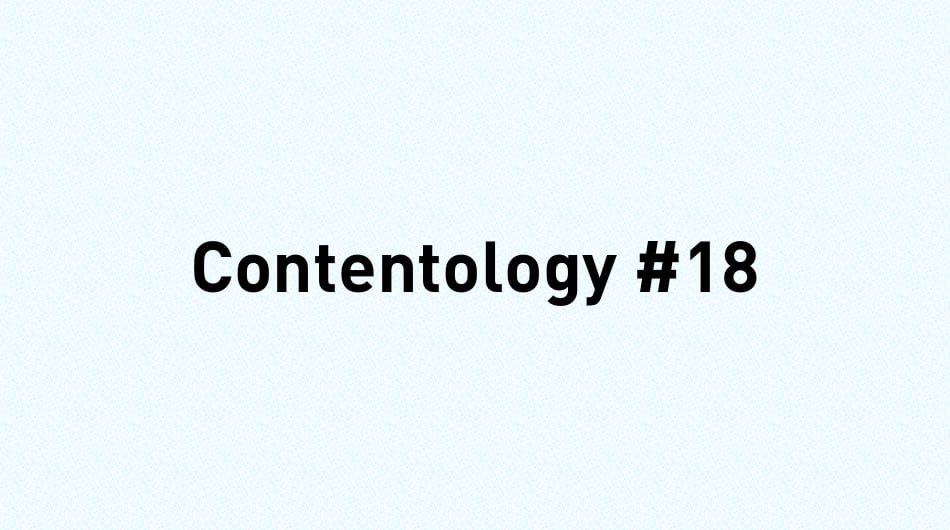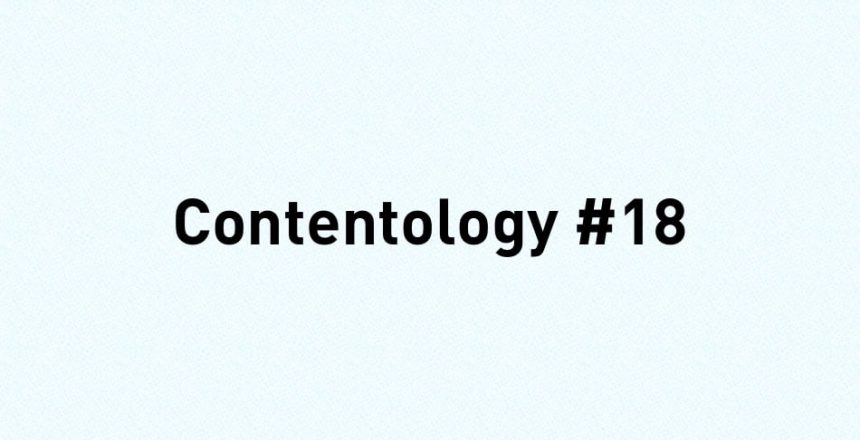Who has the time these days? Whether you’re working in digital, doing the weekly grocery shop or balancing a hobby or sport, there is just no time anymore. Demand for convenience, satisfied by mobile and the web, has not only seen social networks grow but also the emergence of companies like Deliveroo and Uber.

Simplifying the customer experience across channels is now the challenge and what better way to wind the clock forwards, than to start Contentology #18 with some omni-channel?
Omni-channel
Omni-channel provides the link from digital to real-life experiences. It acknowledges the benefits of shopping in-store while integrating the growth of channels that have emerged through the evolution of the internet. Still relatively new for marketing, it clearly requires a good deal of coordination in order to provide the right message, at the right place and at the right time. Done right, it enables customers to get a seamless shopping experience.
As brands become more sophisticated in their use of technology, personalisation will become an increasingly competitive area in the battle to acquire new customers. What is better than a singular marketing message – one that knows your shirt size, your favourite recipes or those sunglasses you like for that well-earned holiday?
The key though, will be to offer reliability and convenience so that wherever you are and whatever devices you are using, the customer journey can be a more engaging brand experience.
Recommended
L2inc goes further into omni-channel by looking at what makes it a successful strategy.
The Dandy Lab
Between July 2015 and February 2016, ground-breaking retail concept The Dandy Lab – powered by University College London and Cisco – was a snapshot of the future.
‘The lab provided a perfect environment for us to test innovative retail technology and offer feedback… We could then better integrate the technology into The Dandy Lab’s customer journey for a seamless multichannel experience.’
The Dandy Lab offered a unique experience where innovative retail technology merged with pioneering startups. One such startup was MishiPay. MishiPay allows customers to pay for products without queueing, linking the purchase system to your phone and then outsourcing it to the cloud. The entire stock of The Dandy Lab was synchronized digitally with the security gates, allowing for the customer, once an item was paid for, to then walk out of the shop without the need for an assistant.
You can see the potential for the solution immediately at peak times of the year such as when the Christmas sales get underway; queuing costs UK retailers an estimated £1 billion a year (EE, 2014). Some of the trialled technology from The Dandy Lab is already suitable to be scaled up to larger retail environments, making it an exciting time for the tech-savvy shopper.
The research also came to the conclusion that in order to create a more personalised shopping experience, a longer-term digital vision is needed, which could last over a decade. Eventually, the use of artificial intelligence will be required to develop the retail environment, thanks to ever-changing customer consumption habits.
Recommended
Read the full white paper from The Dandy Lab.
Marketing and media
The opportunities and incentives to grow and develop a video strategy have never been greater, as evidenced by YouTube, who proclaim: ‘The number of channels earning six figures each year on YouTube has increased by 50 per cent year on year.’
The combination of video, retail and touchscreen is set to play an even bigger role for marketing in the near future.
Echoing progress made by The Dandy Lab, eBay partnered with fashion designer Rebecca Minkoff to create a fully interactive experience, complete with a touchscreen wall. They were able to showcase content such as catwalk shows and deliver intelligent recommendations on what to purchase. The in-store experience is now going digital, but what eBay also highlights is how far most of us still have to go.
Another great example of how retail and technology have been making waves is Topshop Unique, whereby forward-thinking fashionistas can shop the runway right after it happens. Integrating video and leveraging its value proposition after such a high-profile event is a smart move for the pioneering company, which is utilising real-time marketing at an international level.
Subscription boom
You may have noticed an increase in companies offering subscription models, from Spotify for music, to HelloFresh for food and the particularly niche Dollar Shave Club. It seems like a good move on the surface, but what’s the reasoning?
For retailers, a monthly subscription can offer effective growth when thinking about marketing and advertising budgets. Once the subscription is paid for, you do not have to spend more getting customers back – the retention cost is much lower than a single transaction model. It’s also more predictable in terms of costs such as staffing, as well as forecasting revenue.
And it seems to be working – HelloFresh has been valued at $2.9 billion, while Dollar Shave Club is doing well at $615 million. It’s often the products we take for granted on a day-to-day basis where the opportunity is greatest.
Recommended
Read more about subscription businesses here.
Content we love
1. Marion Cotillard and Dior
Would you expect a fashion house like Dior to move into music videos? Marion Cotillard made it happen for the brand while working in collaboration with i-D magazine. It’s beyond our expectations in terms of cinematic quality and special effects while offering a prime spot for Dior to promote themselves to a targeted millennial audience.
2. Matalan takes on TV
Matalan Presents: The Show is a new partnership between the high-street clothing brand, Time Inc and ITV. Online shows every two weeks are backed up by 20-second airtime trailers between shows like Coronation Street. Fronted by Denise Van Outen, who looks at fashion and home trends with the help of journalists and influencers, Matalan Presents: The Show is a great example of a major content-led partnership.
3. Amazon Dash Button
The Amazon Dash button allows you to restock any goods with the touch of a button, so that items you use often, such as coffee capsules or loo roll, can be replenished on-demand. It’s a simple idea that could have huge implications for changing our weekly shopping habits and basket size – it could also be a more realistic entry point into smart homes.



